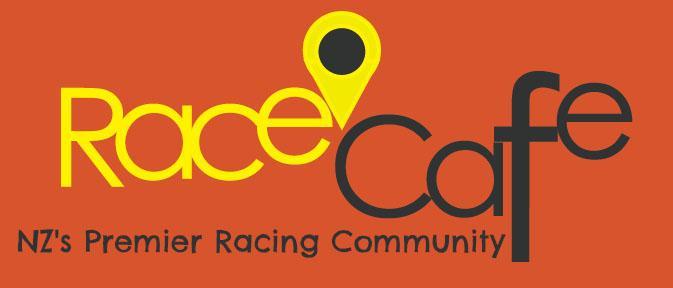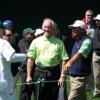RaceCafe..#1...Tipsters Thread.... Share Your Fancies For Fun...Lets See Who The Best Tipsters Here Are.
-
Latest Posts
-
The 3yr old race was just as big a farce. Punters got burnt in that race by some very strange options IMO
-
By Harry Newshound · Posted
The New York Racing Association announced June 3 a selection of special wagers to be offered during the four-day 2024 Belmont Stakes Racing Festival to be held June 6-9 at Saratoga Race Course.View the full article -
By Harry Newshound · Posted
As decisive as Thorpedo Anna was in winning the Kentucky Oaks (G1), the connections of eight other 3-year-old fillies have entered to challenge her in the $500,000 Acorn Stakes (G1) June 7 at Saratoga Race Course.View the full article -
By Harry Newshound · Posted
After a minor setback delayed her 7-year-old debut, multiple grade 1 winner War Like Goddess will face an international field when she makes her first start of 2024 in the $750,000 New York Stakes (G1T) June 7 on the Mellon Turf Course at Saratoga.View the full article -
By Harry Newshound · Posted
Bet365 will also be licensed to distribute BetMakers' Thoroughbred racing content to bet365 customers in New Jersey and both Thoroughbred and harness racing in Colorado.View the full article -
Recall being in the post race throng in the birdcage at the CJC after Sapio won the 1998 NZ Cup. Here was the winning jockey with a big grin plus a bit of a bruised face. A couple of big pot holes at The Swamp’s car park the night before could have been the cause….others may have their version. Whatever, It was a super impressive win!
-
The times they are a-changin (as some one once sang). The Oaks winner was by Dubawi, the Derby winner by Justify and the Jockey Club winner by Lope de Vega - all milers to mile and a quarter horses. The stamina is coming from the dam's side - EZELIYA comes from one of the Aga Khan's known families while CITY OF TROY's dam is Together Forever, a daughter of Galileo and LOOK DE VEGA's dam is a daughter of High Chaparaal. It seems as though the sires need to be 1600-2000m types with the dam bringing in the stamina - this is why the Guineas winners will be more attractive stallion prospects than the Derby winners though IF CITY OF TROY went on to win the Arc he'd obviously be desirable. Coolmore have invested strongly in Justify following the loss of Scat Daddy and seemingly now in preference to War Front, who seems to be the preferred for the speedier types. Dubawi remains popular and successful up here and is the cornerstone of the rise of Godolphin - one of the early freshman sires doing well here is Sergei Prokofiev who has got a good number of 2-y-o winners.
-
Not really! If you know you are on the faster horse and the stable mate will get you to the passing lane it is a no brainer.
-
Of late I have “copy and pasted” some outstanding essays on “what is currently happening in the NH” They have been published in the “Breeding” thread so if you haven’t come across them, go and search them out as they are well worth reading. As always I acknowledge that they are “copy and pasted” and certainly not my writing.
-
By Friend Family · Posted
Yeah ....Dave McDonald could have gone on for another couple of decades and his 'southern style' suited the 'southern race tracks' ......miss your calls mate.....you had a style all of your own. -
By Friend Family · Posted
She came back for the weather! 😡 😂 ... and isn't it good to have her back..... don't you dare jump the ditch again Jayne. -
By Friend Family · Posted
And the RAT is pretty 'stinky' Liz. D G Bradley was, and still is an all-round good guy ....I hope he lives forever! -
Simply go the ALL TOTE way like Hong Kong and all will be resolved. It eliminates nearly all problems, including money laundering.
-
By Friend Family · Posted
Historian .....the reason they all hand to J Dunn is the same reason as they handed to his brother Dexter for a decade as well......Elementary my dear Watson. -
New poster TOTAL Where do these people come from? Basically his or her postings only apply to Darryl Bradley. I smell a RAT.
-
There had been only two North American-bred winners of the Derby before Sir Ivor slammed the European through-and-through Connaught at Epsom in 1968: tobacco magnate Pierre Lorillard’s Pennsylvania-bred colt Iroquois, who struck in 1881, and Singer sewing machine heir Robert Sterling Clark’s Irish-conceived but Kentucky-foaled colt Never Say Die, who scored in 1954. Until then, European breeders were a little complacent that the stock they were producing was the best in the world. Even when Charles Engelhard’s US-bred Irish Derby-winning brothers Ribocco and Ribero appeared, they weren’t considered a major threat to the perceived superiority of local horses as they were by the British-foaled Italian great Ribot, who had been exported to stand in Kentucky. Sir Ivor, owned by Raymond Guest, the American ambassador to Ireland, was harder to ignore though. He had been bred by Alice Headley Bell at Mill Ridge Farm in Kentucky and was the product of a mating between the US-bred pair Sir Gaylord and Attica. Sir Ivor (pictured below) opened the floodgates of success for commercial North American farms in European racing. In 1969 Habitat, another son of Sir Gaylord who was bred by the Nuckols brothers in Kentucky, was champion miler for Engelhard. In the following year Nijinsky, bred in Canada by EP Taylor in the second crop of his Kentucky Derby and Preakness Stakes winner Northern Dancer, became the first horse in 35 years to take the English Triple Crown, also carrying Engelhard’s colours. In 1971 the legendary Mill Reef, a son of US-breds Never Bend and Milan Mill bred by Paul Mellon at his Rokeby Stables in Virginia, won the Derby as well. He was followed on the Epsom Classic’s roll of honour by Roberto, bred by John Galbreath at his Darby Dan Farm in Kentucky, and also the product of parents who both had US suffixes, in Hail To Reason and Bramalea. That made it four North American-bred Derby winners in five years, when up until 1968 there had been only two since the race’s inauguration in 1780. The newcomers had undeniably all-American parentage, too. Empery was added to the list of North American-bred winners in 1976, although he was something of an outlier, bred by Nelson Bunker Hunt from the Irish-bred, Kentucky-based Vaguely Noble and the Peruvian-bred mare Pamplona. European breeders could rest on their laurels no longer. While some sought to import North American stallions and mares, and often ended up with the Americans’ cast-offs, Vernons Pools heir Robert Sangster, ambitious stud owner John Magnier and Vincent O’Brien, trainer of Sir Ivor, Nijinsky and Roberto, decided to pool their resources in order to buy the most attractive stallion prospects at the yearling sales in Kentucky and to stand them in Ireland if they won the requisite big races. It could be said that the undertaking was an act of repatriation, as many of the most coveted North American sires traced back to horses taken from Europe and resettled in the US and Canada in the first half of the 20th century. For example Sir Ivor’s sire Sir Gaylord was by Irish-bred Turn-To out of Somethingroyal, a daughter of British-bred sire Princequillo, and Sir Gaylord’s immortal half-brother Secretariat was by Bold Ruler, a son of the Aga Khan’s British-bred Derby third Nasrullah. Northern Dancer, who turned out to be the klondike, was for his part by Nearctic, whose parents Nearco and Lady Angela were foaled in Europe, out of Natalma, whose damsire Mahmoud was a French-bred winner of the Derby for the Aga Khan. Sangster and his syndicate bought EP Taylor’s Canadian-bred Northern Dancer colt out of Fleur, a half-sister to Nijinsky, for $200,000 at the Keeneland July Sale of 1975, even though as a small, flashy chestnut the young horse looked nothing like his famous close relation. The Minstrel, as the colourful colt was named, won the Dewhurst at two and the Derby, Irish Derby and King George VI and Queen Elizabeth Stakes at three. He became too valuable to stand at the nascent Coolmore, so a lucrative deal was struck for him to stand at Taylor’s Windfields Farm instead. He did his bit for the Americanisation of breeding from his base in Maryland by siring European Group 1 winners Bakharoff, L’Emigrant, Melodist, Minstrella, Musical Bliss, Opening Verse, Palace Music, Silver Fling and Treizieme, as well as the dams of Grey Swallow, Shirocco and Zafonic. Henbit gave North America another Derby success in 1980, although the son of South American champion turned US turf star Hawaii, bred by Helen Drake Jones, was a cheap purchase by bloodstock agent George Blackwell in Kentucky at $24,000. Sangster and his fellow investors had to wait until 1982 for their next North American-bred stallion prospect to win the Derby, with Nijinsky’s son Golden Fleece bolting up at Epsom. He was retired to Coolmore with a valuation of $28 million but succumbed to cancer after one season at stud. With the bloodstock boom in full swing in the early 1980s, driven by fierce competition between the Sangster-led team, the new Arab owners and other leading players for the most attractive yearlings by Northern Dancer, Nijinsky et al in Kentucky, a flurry of North American-bred Derby winners followed throughout the decade. Teenoso, bred by Mollers Racing from Gainesway-based Prix du Jockey Club hero Youth, won in 1983; Secreto, another bred and sold by EP Taylor, beat fellow Northern Dancer son El Gran Senor in 1984; and Shahrastani, bred by the Aga Khan from Nijinsky, resisted the late surge of Dancing Brave, in turn bred by Glen Oak Farm in Kentucky from Lyphard, in a notorious finish in 1986. Nashwan, bred by Hamdan Al Maktoum in Kentucky by sending the blue hen mare Height Of Fashion to Blushing Groom at Gainesway, rounded out a decade of US domination of the Derby in 1989. After the bloodstock bubble burst, three more North American-bred winners arrived in the 1990s: Erhaab (1994), bred by Sheikh Hamdan from US champion two-year-old and Three Chimneys sire Chief’s Crown; Lammtarra (1995), bred by Gainsborough Farms by sending Oaks winner Snow Bride to Nijinsky; and Benny The Dip (1997), bred by Charles Landon Knight from Silver Hawk, a son of Roberto who had run third behind Golden Fleece in the Derby before returning to America to stand at Airdrie Stud. The flow of North American-bred Derby heroes was reduced to a trickle in the new millennium, with only 2003 winner Kris Kin boasting a US or CAN suffix on the roll of honour in the 2000s and 2010s. The Niarchos family-bred son of Kris S – another stallion by Roberto, one of the Derby winners who had prompted the gold rush in Kentucky – was a throwback to a recent earlier age, purchased for $275,000 by Charlie Gordon-Watson at the Keeneland September Yearling Sale. Although, in a sign of how times had changed, there was little demand for his services as a stallion when he retired. By then, most of the major farms in Kentucky were no longer willing or able to buy the best sire prospects in Europe and sell shares in them and their progeny back to owners on that continent. Instead, they concentrated on domestically campaigned dirt lines. Meanwhile, concerns about permissive drug regimes in the US helped drive a deeper wedge between the two continents. Suspicion about the value of American form, and consequently the strength of the region's pedigrees, set in and made Europeans more reluctant to shop in Kentucky. Bar a brief run on youngsters by Storm Cat – a son of Storm Bird, one of the Northern Dancer sons who had been bought from Kentucky and sold back there for great profit by the Coolmore partners – and some headline action for progeny of Danzig and Kingmambo, big prices paid by Europeans for US yearlings dried up. As it happened, European horsemen had achieved what they set out to do when buying the best North American bloodlines and breeding from them on their side of the pond anyway. Coolmore in particular had found the champion sires and breed-shapers they wanted from their transatlantic ventures, even if it had taken a lot of expensive sifting. Caerleon, a son of Nijinsky bought for $800,000 from Keeneland in 1981, led the British and Irish table in 1988 and 1991, when he was represented by Derby hero Generous, but it was Sadler’s Wells, a son of Northern Dancer bred by Sangster out of Fairy Bridge, a filly purchased in Kentucky in 1976, who really rode to the rescue. The Irish 2,000 Guineas, Eclipse and Irish Champion Stakes winner hit the ground running when his first crop yielded the Dewhurst dead-heaters Prince Of Dance and Scenic, and he went on to become a conveyor belt of top-class horses at Coolmore. He was the leading sire in 1990 and in every year from 1992 until 2004. Coolmore’s acquisition from Juddmonte of Danehill, bred by the late Khalid Abdullah’s operation in Kentucky from Northern Dancer’s son Danzig, also proved to be pivotal. Exceptionally versatile and prolific, Danehill took up the mantle from Sadler’s Wells, topping the sire table from 2005 until 2007, with his son and studmate Danehill Dancer gaining the title in 2009. Coolmore maintained its stranglehold on the sire championship through Sadler’s Wells’ outstanding son Galileo, top of the tree in 2008 and from 2010 until 2020. It also stood another brilliant source of middle-distance performers by Sadler’s Wells in Montjeu. Those Coolmore patriarchs' dominance is reflected in all those European-bred Derby winners in the new millennium: two for Sadler’s Wells in Galileo and High Chaparral; a record five for Galileo in New Approach, Ruler Of The World, Australia, Anthony Van Dyck and Serpentine; and four for Montjeu in Motivator, Authorized, Pour Moi and Camelot. Galileo became the paternal grandsire of three Derby winners, in Masar (by New Approach), Adayar (Frankel) and Desert Crown (Nathaniel), and Montjeu filled the same position in the pedigree of Wings Of Eagles (Pour Moi). Even the sprinter-miler Danehill put a Derby winner on the board, with North Light, after being sent the Prix du Cadran winner Sought Out to add some stamina to the genetic mix. The success of Sadler’s Wells and sons Galileo and Montjeu, as well as Danehill, in an era when sires could regularly cover three-figure books resulted in a high-class problem for Coolmore, but a problem nonetheless: an urgent need to find worthy outcrosses for those lines. An international search was undertaken, with Fastnet Rock imported from Australia to produce good results on the track but less so in the sales ring, War Front mined in Kentucky until a few too many failed to train on at three, and rags-to-riches Wootton Bassett bought from France at great expense. Japanese icon Deep Impact mustered excellent returns from a small number of matings with Coolmore’s daughters of Sadler’s Wells and his sons, including last year’s Derby winner Auguste Rodin, who is out of Galileo's multiple Group 1-winning daughter Rhododendron. It’s a crying shame the operation wasn't able to use him more, but it seems keen not to miss the boat with a Japanese superstar again, by using world champion Equinox, his sire Kitasan Black and Deep Impact’s Triple Crown-winning son Contrail this year. The pursuit of outcrosses to Northern Dancer’s most successful sire son, Sadler’s Wells, has also resulted in City Of Troy, a colt out of another top-class daughter of Galileo in Together Forever who on Saturday became the 19th North American-bred Derby winner, but the first since Kris Kin 21 years ago. Last year’s champion two-year-old, bouncing back from his 2,000 Guineas flop, is by US Triple Crown laureate Justify, himself a son of Scat Daddy, who was making a name for himself as one of the most exciting sires anywhere in the world when he died of a heart attack aged 11 at Coolmore's Ashford Stud in Kentucky in 2015. Scat Daddy was siring sharp, speedy stock with abundant class, and crucially for Coolmore his sons could be mated with Galileo mares without producing drastically close inbreeding. He was by Storm Cat’s paternal grandson Johannesburg, and his dam Love Style was out of a daughter of Nijinsky, but helpfully he had no Sadler’s Wells or Danzig in his pedigree. Coolmore faced a race against time to establish a Scat Daddy line, and spent vast amounts of money in doing so, with MV Magnier signing for more than $12 million-worth of young stock by the sire after his death, and reports of $75m paid for the right to stand Justify after he won the Belmont Stakes. The ends have probably justified the means, though, as Coolmore have two proven and popular sons of Scat Daddy on their Irish roster in No Nay Never and Sioux Nation, with No Nay Never providing four more team members in Arizona, Blackbeard, Little Big Bear and Ten Sovereigns. They will be generating plenty of business for the operation, but Justify can now be expected to create fortunes at Ashford Stud. He is reportedly covering the cream of the American and European broodmare population this year, on the back of supplying top-level winners Arabian Lion and Aspen Grove in his first crop and Group/Grade 1-winning two-year-olds City Of Troy, Hard To Justify, Just FYI and Opera Singer in his second. City Of Troy’s calm demeanour, giant stride and determination in the Derby should have won over any last remaining doubters of his sire, while this season's Classic-placed fillies Opera Singer and Ramatuelle look capable of fanning the flames of demand for him with further successes. Justify could conceivably draw Europeans to Kentucky sales en masse in a way that no sire has done for decades. It’s not difficult to envisage him causing another boom in the Bluegrass, as the biggest operations on both sides of the Atlantic, as well as Japan, fight over his best offerings. Coolmore aren't the only ones who need outcrosses to dominant sire-lines, after all. If you don’t believe it, look at last month’s Arqana Breeze-Up Sale in Deauville, where Justify's offspring accounted for three of the top four prices at €2.3m, €1m and €800,000 – being sold to Godolphin, Amo Racing and Coolmore respectively. This year also sees the widely admired unbeaten world champion Flightline’s first foals go on the market. They will likely draw huge international interest too. Perhaps disappointed European buyers who miss out on what they want by Justify and Flightline will look at other established US sires who have hitherto been of more domestic interest, like Curlin, Gun Runner and Quality Road. A rising tide lifts all boats. It appears as though a new chapter in the transatlantic trade of bloodlines is in the process of being written. North American-bred Derby winners might be a more common sight in the next decade. What a shame, then, that some in US racing seem determined to sabotage the story, especially with the announcement last week that the Louisiana Racing Commission is to loosen its medication rules, flying in the face of the Horseracing Integrity and Safety Authority’s attempts to clean up the sport. Acknowledgement Copy and pasted from an outstanding article by Martin Stevens
-
I used to be able to keep an eye on the upcoming races on both channels via the thread along the bottom of the screen. I could see what was about to start on both channels. Please bring it back!
-
I'm still shaking my head over that Netball coach. No one got one for their services to race cafe 😢.
-
When will Canterbury drivers learn not to just cede the lead to John Dunn and his band of stable drivers. They are absolutely dominating off the front end lately.
-
-
Like & Follow Us on Facebook
-
RaceCafe News
-
Featured Video
-
Topics
-
Disclaimer
While the owners and managers of RaceCafe endeavour to moderate and control the site and posts on it, they give no guarantee that posts are true and correct, and take no responsibility whatsoever for what individuals post on the site.
Posts do not necessarily reflect the sentiments, views or beliefs of Race Cafe or its owners and management.
The owners and managers of RaceCafe reserve the right to remove posts from the site and to provide details of members whose posts warrant scrutiny.


 RaceCafe News
RaceCafe News


